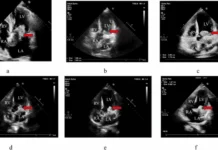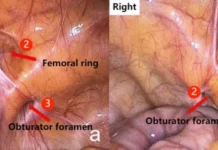
- Scrofula is a disease in which the bacteria causing tuberculosis causes symptoms outside the lungs.
- Symptoms primarily include inflamed and irritated lymph nodes in the neck.
- The condition is also referred to as “cervical tuberculous lymphadenitis”.
A 66-year-old male patient presented to the outpatient clinic with paradoxical reaction in the treatment of scrofula. The patient presented to the clinic with a 1-month history of a progressively enlarging mass on the lower right side of the neck (Panel A).
On examination the patient’s temperature was 37.0°C and did not show any signs of physical wasting, loss of weight or muscle mass. Moreover, the mass was soft and non-tender, measuring 5.5 cm at the largest dimension. For further evaluation, the patient was advised a chest radiograph which showed no lesions in the lungs. In addition, findings on the computed tomographic scan were of the neck and chest were remarkable for multiple enlarged lymph nodes with peripheral enhancement which extended from the lower right side of the neck to the mediastinum.
Fine-needle aspiration of the neck on microscopic examination revealed acid-fast bacilli. The culture grew Mycobacterium tuberculosis sensitive to first-line antituberculous treatment. Additionally, the patient was negative for human immunodeficiency virus.
The findings were consistent with the diagnosis of mycobacterial cervical lymphadenitis or scrofula. Treatment included rifampin, isoniazid and pyrazinamide. However, during the first three months of treatment, the neck mass showed a paradoxical reaction with drainage. The neck mass gradually resolved with wound care over 5 months.
After completing a 9-month course of treatment, there was no disease recurrence and the patient appeared well at his 3-month follow-up.
References
Paradoxical Reaction in the Treatment of Scrofula https://www.nejm.org/doi/full/10.1056/NEJMicm2001912



